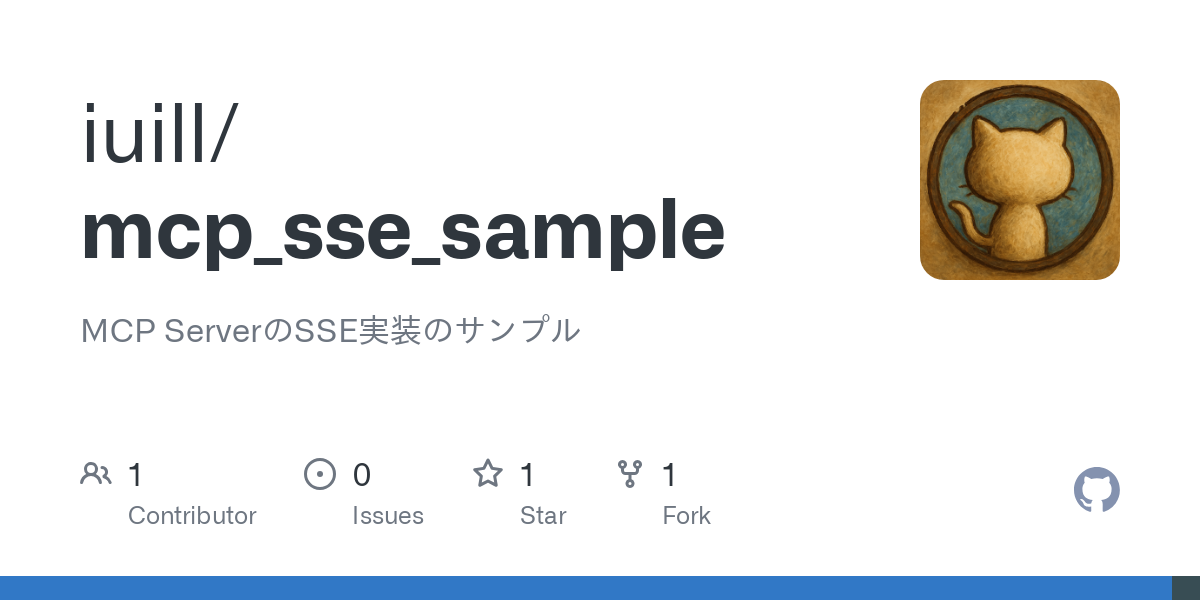iuill_mcp_sse_sample
by iuillSSE Implementation for MCP Server
Overview
This project provides a sample implementation of Server-Sent Events (SSE) for the MCP Server. It demonstrates how to use SSE with the MCP protocol, offering a practical example for developers. The project includes various tools and components to showcase the capabilities of SSE in real-time communication.
Components
Tools
- Echo
- Description: Simple tool to echo back input messages.
- Input:
message(string): Message to echo back. -
Returns: Text content with echoed message.
-
Add
- Description: Adds two numbers together.
- Inputs:
a(number): First number,b(number): Second number. -
Returns: Text result of the addition.
-
Long Running Operation
- Description: Demonstrates progress notifications for long operations.
- Inputs:
duration(number, default: 10): Duration in seconds,steps(number, default: 5): Number of progress steps. - Returns: Completion message with duration and steps.
-
Sends: Progress notifications during execution.
-
Sample LLM
- Description: Demonstrates LLM sampling capability using MCP sampling feature.
- Inputs:
prompt(string): The prompt to send to the LLM,maxTokens(number, default: 100): Maximum tokens to generate. -
Returns: Generated LLM response.
-
Get Tiny Image
- Description: Returns a small test image.
- No inputs required.
-
Returns: Base64 encoded PNG image data.
-
Print Env
- Description: Prints all environment variables.
- Useful for debugging MCP server configuration.
- No inputs required.
-
Returns: JSON string of all environment variables.
-
Annotated Message
- Description: Demonstrates how annotations can be used to provide metadata about content.
- Inputs:
messageType(enum: "error" | "success" | "debug"): Type of message to demonstrate different annotation patterns,includeImage(boolean, default: false): Whether to include an example image. - Returns: Content with varying annotations.
Logging
The server sends random-leveled log messages every 15 seconds, e.g.:
{
"method": "notifications/message",
"params": {
"level": "info",
"data": "Info-level message"
}
}
Usage
Local Execution
# Install dependencies
npm install
# Build the project
npm run build
# Run in STDIO mode
npm run start
# Run in SSE mode
npm run start:sse
Using with Claude Desktop
Add the following to claude_desktop_config.json:
{
"mcpServers": {
"sse-sample": {
"command": "npx",
"args": [
"-y",
"mcp_sse_sample"
]
}
}
}
About
This project is a sample implementation of SSE for the MCP Server, designed to help developers understand and utilize SSE in their MCP-based applications.
Resources
License
Languages
- TypeScript 97.6%
- Dockerfile 2.4%

